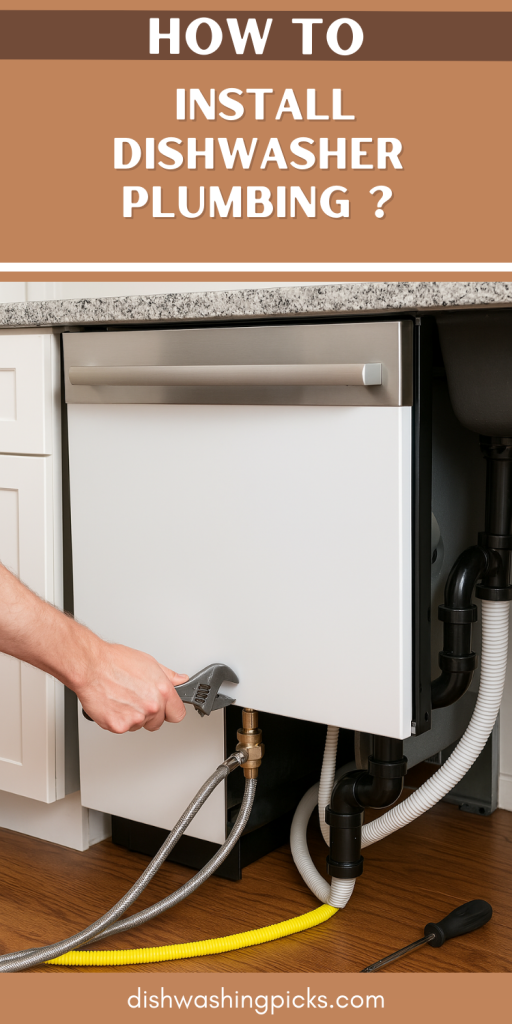Alright, so… you’re staring at your brand-new dishwasher, all shiny and full of promise, and wondering, “Cool… but how the heck do I hook this thing up?”
Don’t stress. Installing dishwasher plumbing sounds like something that requires a toolkit the size of your car and a degree in pipe wizardry—but it’s not. You totally got this. We’re breaking it down in a chill, no-pressure way, one step at a time.
Let’s roll.
Step 1: Figure Out Where Everything’s Going
First things first—where’s your dishwasher gonna live?
If you’re swapping out an old one, congrats—you already have the setup. You’re just playing plug-and-play. But if this is your first-ever dishwasher install, or you’re moving it to a new spot, you’ll need to handle a few things:
- Water line (yep, it needs to drink)
- Drain line (it’s gotta let that dirty water go somewhere)
- Power (unless your dishwasher runs on dreams and good vibes)
Pro tip: Keep it close to your kitchen sink if you can. Why? Because your sink already has the water and drain lines you need. And let’s be honest—nobody wants to rip up half the kitchen floor.
Step 2: Tools You’ll Actually Use (No Weird Gadgets Here)
You really don’t need anything wild. Just a few basics:
- Adjustable wrench
- Teflon/plumber’s tape
- Bucket or towel (just in case things get… splashy)
- A drill (only if you need to make a hole through a cabinet)
- A dishwasher install kit (grab one at any hardware store—it’s a time-saver)
Got those? Sweet. Let’s get plumbing.
Step 3: Hook Up the Water Supply Line
This is the part that makes people nervous, but seriously—it’s just a hose.
Here’s how it goes:
- Turn off the water under your sink. (Twist it till it stops—lefty loosey, righty tighty.)
- Install a dual shut-off valve or T-fitting on the hot water line so both the sink and the dishwasher can share the love.
- Wrap threads with Teflon tape. A little goes a long way. We’re trying to prevent leaks, not mummify your plumbing.
- Connect the water inlet hose from the valve to the dishwasher. Tighten it up snug—don’t Hulk-smash it.
That’s it. If you can connect a garden hose, you can do this.
Step 4: Let’s Talk About the Drain Line
This is how your dishwasher gets rid of all the gunky water after a cycle.
You’ve got two main options:
- Hook it up to your garbage disposal
- Or connect it to the sink drain with a branch tailpiece
But wait—super important:
You need either a high loop or an air gap. Why? To stop gross water from the sink sneaking back into your dishwasher. Ew.
High loop: Just loop the hose up high under the sink before bringing it down to the drain.
Air gap: A little metal dome thing that sits next to your faucet. Pretty simple.
Clamp the hose tight to the drain port, and make sure it’s not kinked or flopping around like a fish.
Step 5: Power It Up
Now for the juice.
If your dishwasher has a regular plug and there’s an outlet under the sink? Jackpot. Just plug it in.
But if it’s a hardwired setup:
- Turn off the breaker (seriously, double-check this one).
- Open the junction box at the front base of the dishwasher.
- Connect the wires: black to black, white to white, and green or bare copper to ground.
- Secure it all with wire nuts and tape, then close up the box.
Now flip the breaker back on and you’re all set.
Step 6: Test Drive Time
Alright… moment of truth.
- Turn the water back on
- Power it up
- Run a short cycle
While it’s running, crouch down and check everything—no leaks? No weird noises? Is the water draining like it’s supposed to? Perfect.
If something’s off, it’s usually something simple like a loose hose or a twist in the drain line. Nothing you can’t handle.
That’s It—You Did It!
No joke, you just installed dishwasher plumbing like a total champ. Maybe even enjoyed it a little?
From here on out, you get to kick back, hit a button, and let the machine do the scrubbing. Your hands will thank you.
And hey—if you ever need to help a friend do the same thing, you’ll sound like a total pro. Just say something like, “Oh yeah, it’s really just a few connections—no big deal.” (And smile like you weren’t mildly panicking two hours ago.)

